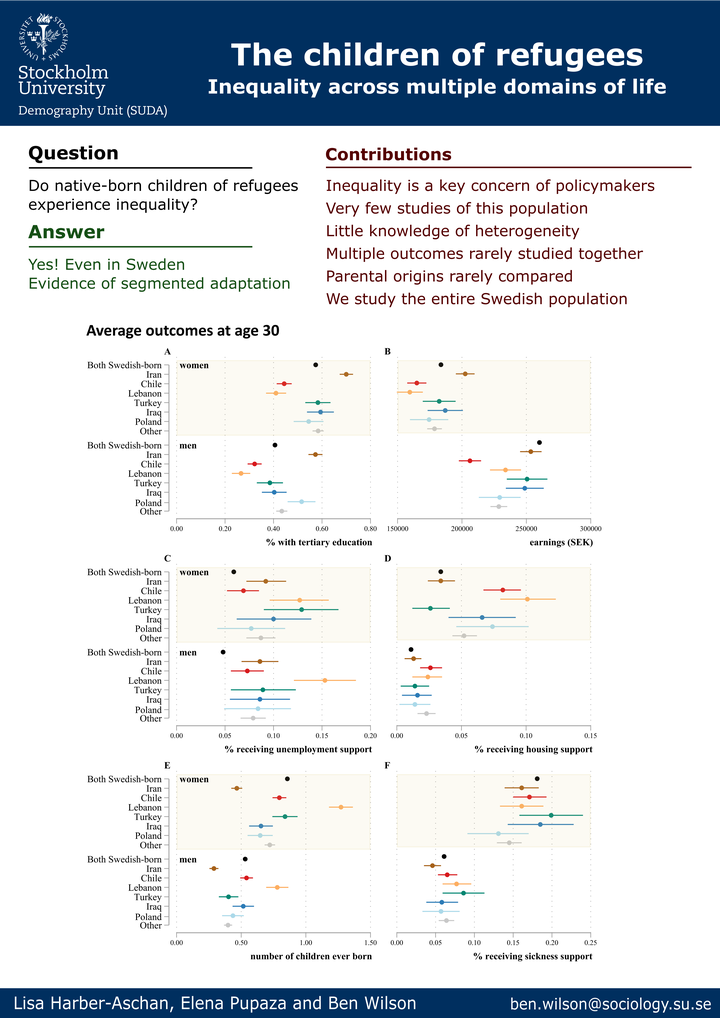The legacy of exile for children of refugees
Inequality and disparity across multiple domains of life

Abstract
While much is known about the lives of refugees, less is known about the lives of their children, particularly with respect to the inequalities that they may face in adulthood. Using longitudinal data for the whole population of Sweden, we study outcomes at age 30 across different domains of life, including: education, earnings, family formation and the receipt of social support for unemployment, housing, or poor health. We make comparisons between Swedish-born children of refugees, Swedish-born children of non-refugee immigrants, Swedish-born children of Swedish-born parents, and foreign-born refugees who arrived as children. We then examine variation by parental country of birth for Swedish-born children of refugees. Our results show that inequalities and disparities are extremely heterogeneous, by outcome, by sex, and by parental background. Despite lower fertility at age 30, Swedish-born children of refugees experience inequalities in earnings, unemployment and housing support. This is true for both women and men, but varies considerably by parental country of birth. Children of refugees from Lebanon or Chile are the most likely to experience disadvantage, in contrast to those with parents from Iran or Poland. Those with two refugee parents fare better than those with one refugee parent and one Swedish-born parent, suggesting that a native-born parent is not necessarily protective against inequality. We find clear evidence of segmented adaptation for the children of refugees, but our findings suggest that adaptation is far from a uniform process, with a much richer picture emerging from a comparison across multiple domains of life.